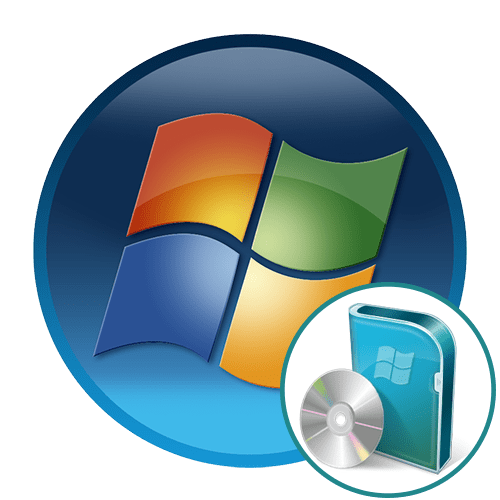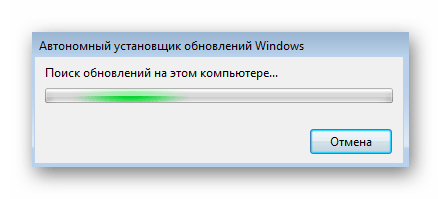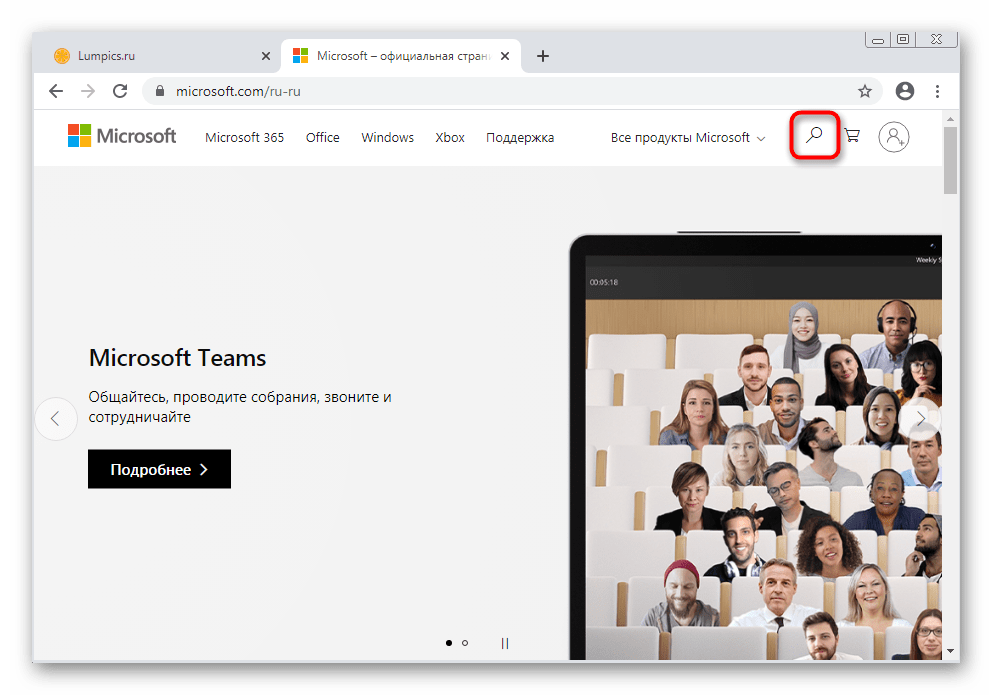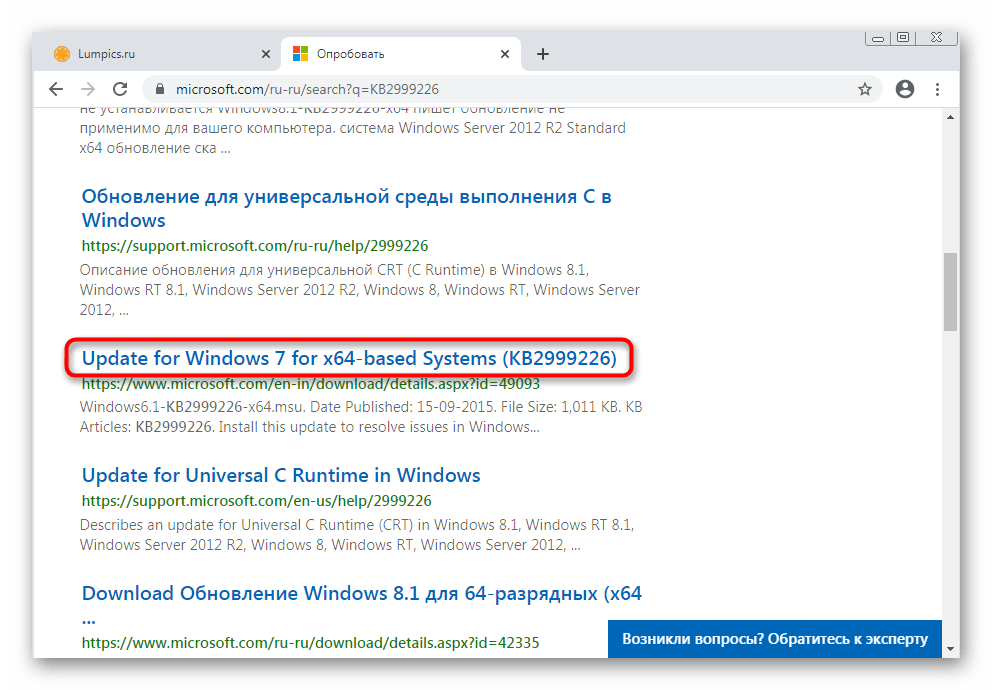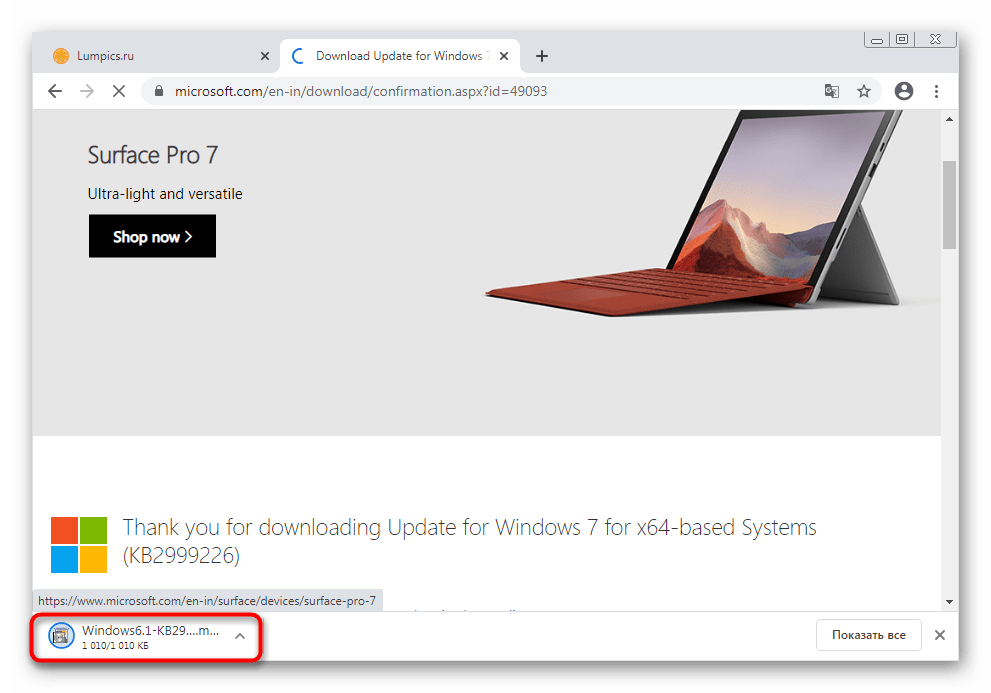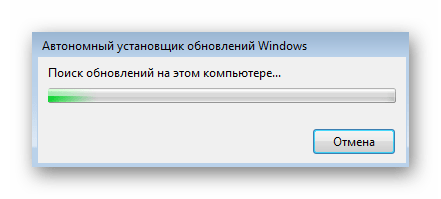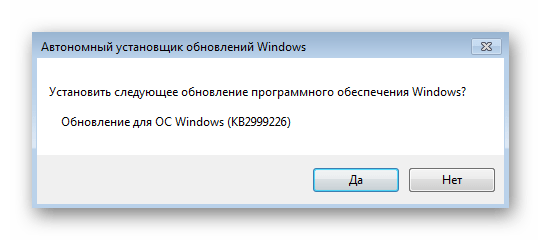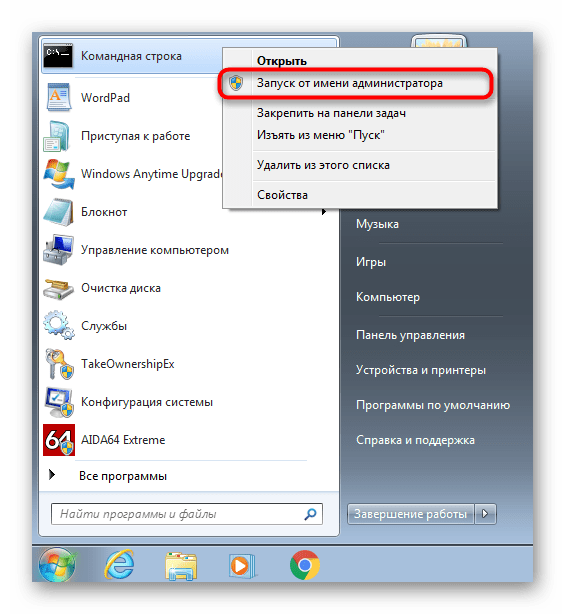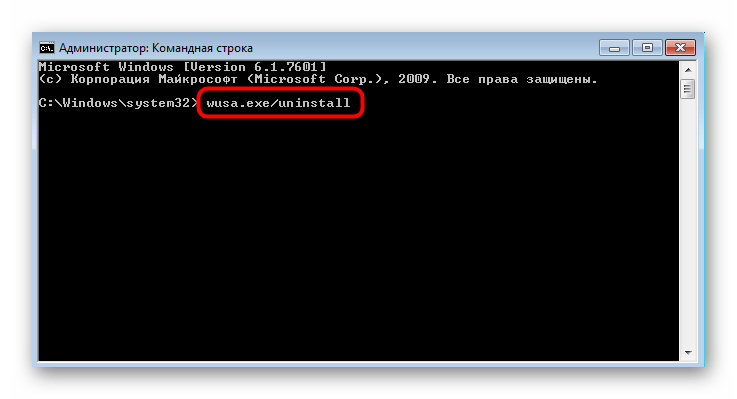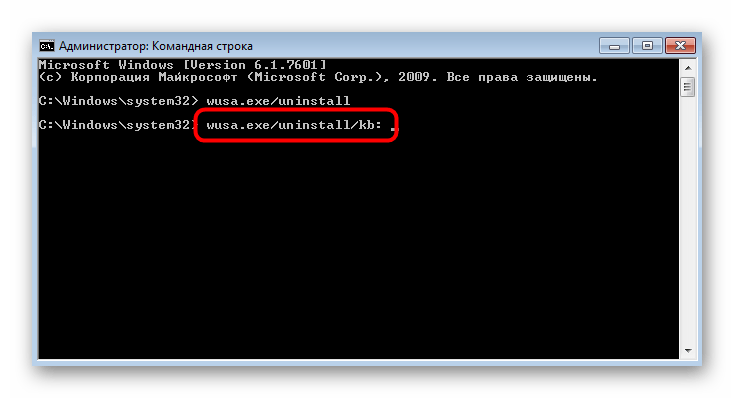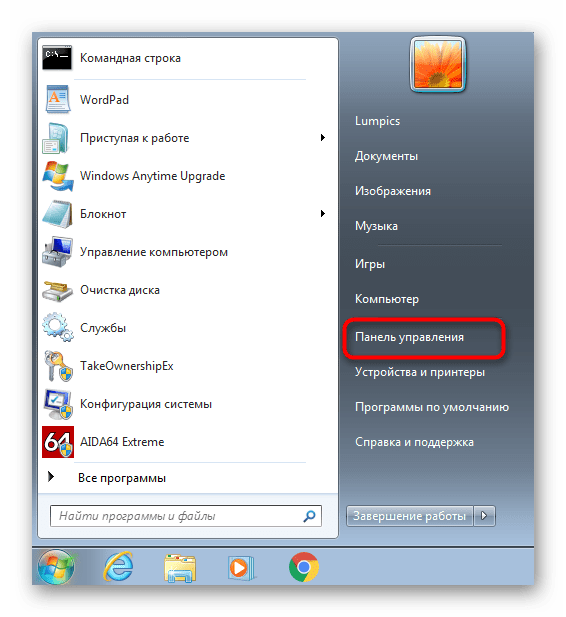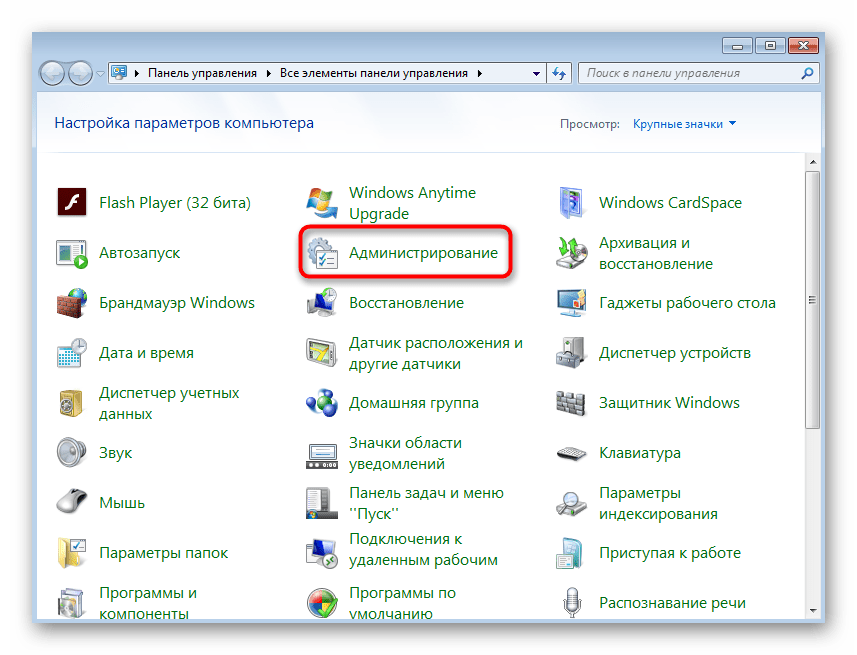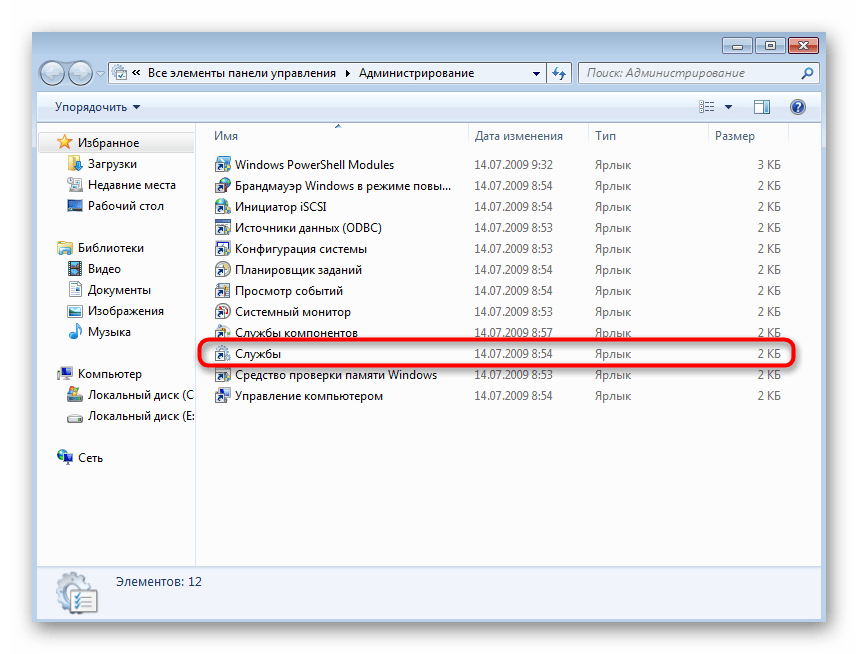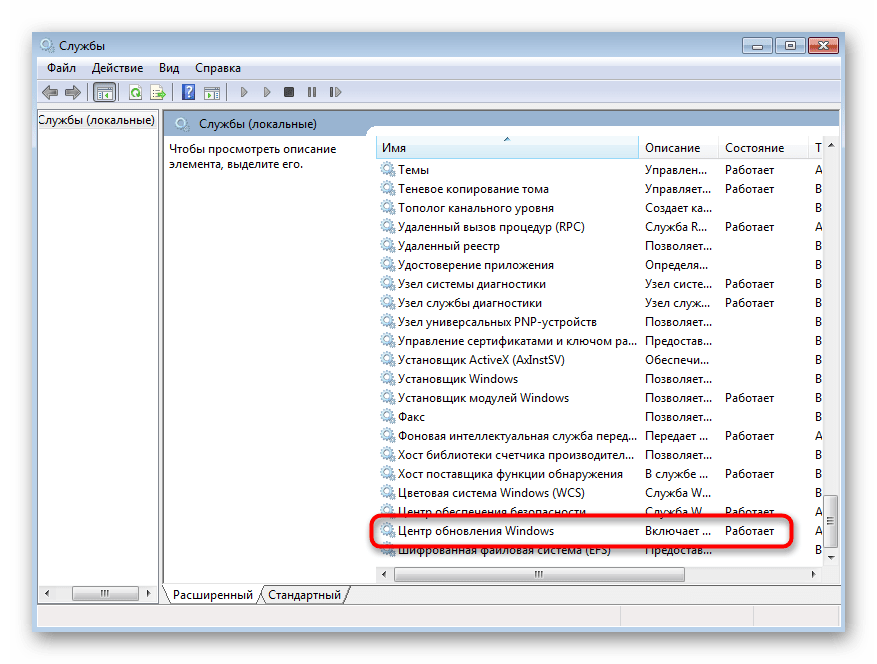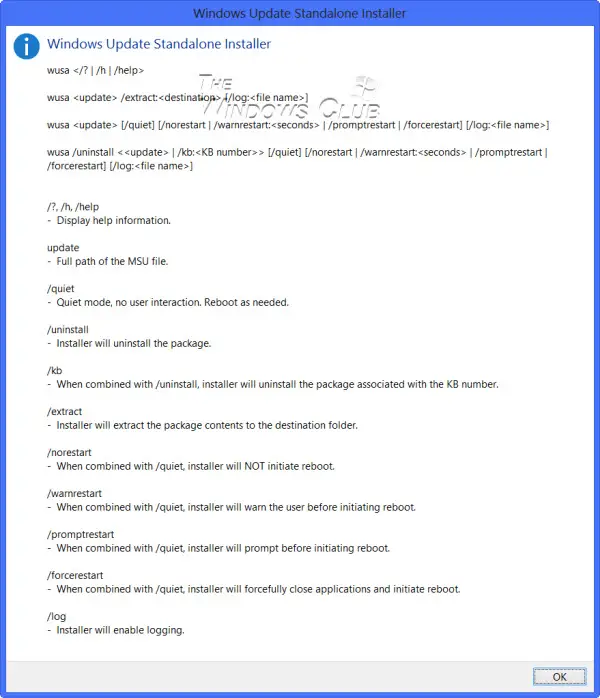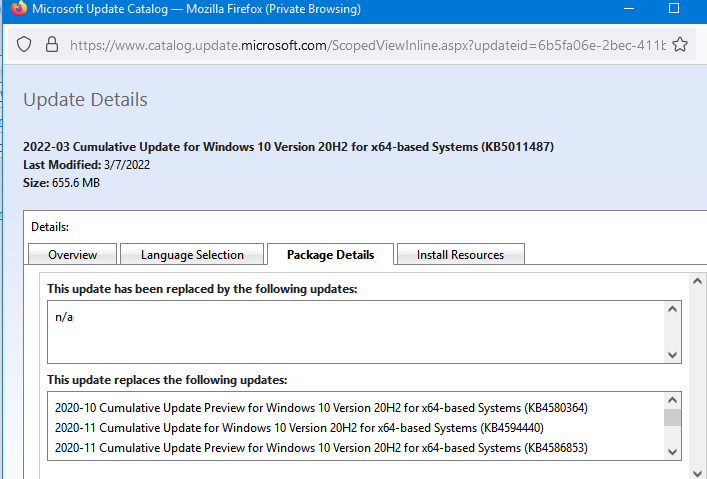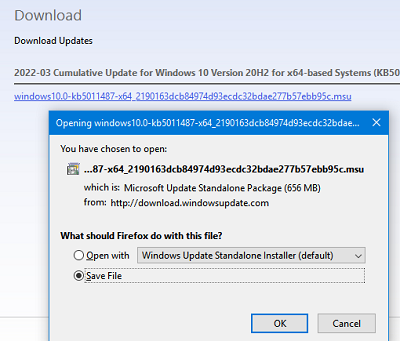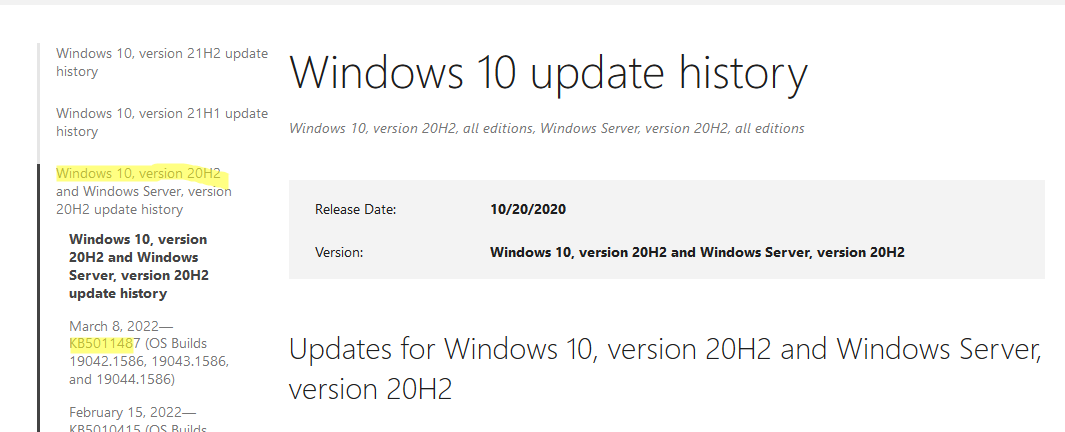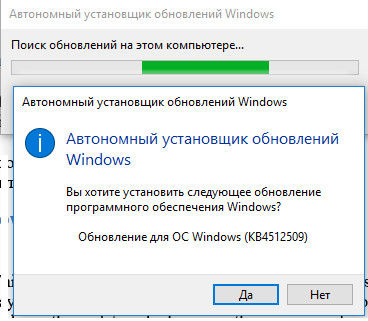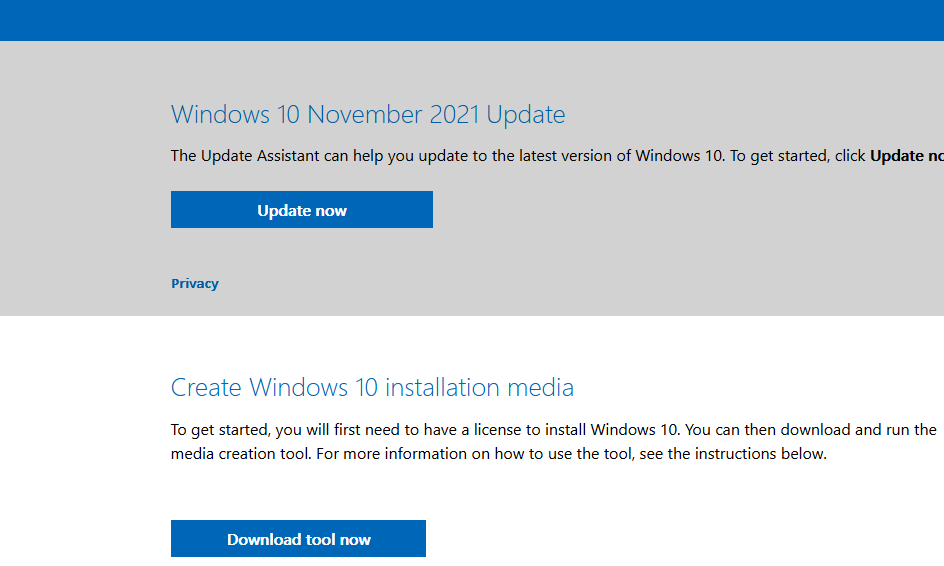Windows Vista Home Basic Windows Vista Home Premium Windows Vista Ultimate Windows Vista Business Windows Vista Enterprise Windows Vista Starter Windows Server 2008 Datacenter Windows Server 2008 Enterprise Windows Server 2008 Standard Windows Server 2008 for Itanium-Based Systems Windows 7 Home Basic Windows 7 Home Premium Windows 7 Professional Windows 7 Ultimate Windows Server 2008 R2 Datacenter Windows Server 2008 R2 Enterprise Windows Server 2008 R2 Standard Windows 8 Windows 8 Enterprise Windows 8 Pro Windows Server 2012 Datacenter Windows Server 2012 Datacenter Windows Server 2012 Essentials Windows Server 2012 Foundation Windows Server 2012 Foundation Windows Server 2012 Standard Windows Server 2012 Standard Windows 8.1 Enterprise Windows 8.1 Pro Windows 8.1 Windows Server 2012 R2 Datacenter Windows Server 2012 R2 Standard Windows Server 2012 R2 Essentials Windows Server 2012 R2 Foundation Windows 10 More…Less
Introduction
This article describes the Windows Update Standalone Installer (Wusa.exe) in the following Windows operating systems:
-
Windows Vista
-
Windows Server 2008
-
Windows 7
-
Windows Server 2008 R2
-
Windows 8
-
Windows Server 2012
-
Windows 8.1
-
Windows Server 2012 R2
-
Windows 10
-
Windows Server 2016 Technical Preview
The Wusa.exe file is in the %windir%System32 folder. The Windows Update Standalone Installer uses the Windows Update Agent API to install update packages. Update packages have an .msu file name extension. The .msu file name extension is associated with the Windows Update Standalone Installer.
More Information
An .msu file contains the following contents.
|
Content |
Description |
|
Windows Update metadata |
Describes each update package that the .msu file contains. |
|
One or more .cab files |
Each .cab file represents one update. |
|
An .xml file |
This .xml file describes the .msu update package. Wusa.exe uses the .xml file when you perform an unattended installation of the update by using the Package Manager tool (Pkgmgr.exe). For example, you download hotfix 934307. The Windows6.0-KB934307-x86.msu file is in the C:934307 folder. You type the following command at a command prompt to expand the .msu file to a temporary folder: expand -f:* «C:934307Windows6.0-KB934307-x86.msu» %TEMP% pkgmgr.exe /n:%TEMP%Windows6.0-KB934307-x86.xml |
|
A properties file |
This file contains string properties that Wusa.exe uses. For example, this file contains the title of the associated article in the Microsoft Knowledge Base. |
When you use Wusa.exe to install an update package, Wusa.exe expands the contents of the .msu file to a temporary folder. Then, Wusa.exe performs the following steps:
-
Wusa.exe uses the Windows Update metadata in the .msu file to search for applicable updates.
-
Wusa.exe copies the contents of the applicable updates to the Windows Update sandbox. The Windows Update sandbox is a protected folder.
-
Wusa.exe calls the appropriate function in the Windows Update Agent API according to the mode in which you start Wusa.exe.
-
When the Windows Update wizard finishes the installation, the Windows Update Agent API returns a status. Then, Wusa.exe works synchronously with the Windows Update Agent API.
Note Each update in an .msu update package is installed in a separate session. Only one instance of Wusa.exe runs when you use Wusa.exe. Wusa.exe does not change the contents of the updates in .msu files. The Windows Update infrastructure performs the required actions according to the contents of the update.
When you start Wusa.exe in interactive mode, a welcome screen displays high-level information about the update. If you continue to install the update, Wusa.exe calls the appropriate function in the Windows Update Agent API to start the Windows Update wizard. The Windows Update wizard displays the Microsoft Software License Terms that are associated with the update package. Wusa.exe calls the Windows Update Agent API to continue the installation. Then, Wusa.exe waits until the Windows Update wizard finishes the installation.
To install an .msu update package, run Wusa.exe together with the full path of the file.
For example, if the Windows6.0-KB934307-x86.msu file is in the D:934307 folder, type the following command at a command prompt to install the update package:
wusa.exe d:934307Windows6.0-KB934307-x86.msuYou can also double-click the .msu file to install the update package.
You can use Wusa.exe to uninstall an update in Windows 7, Windows Server 2008 R2, Windows 8, and Windows Server 2012.
Note You cannot use Wusa.exe to uninstall updates in Windows Vista or Windows Server 2008. You can use Windows Defender Software Explorer to manually uninstall the updates. For more information about Software Explorer, go to the following Microsoft website:
Using Software Explorer in Windows Defender
You can use the following switches together with Wusa.exe.
|
Switch |
Description |
|
/?, /h, /help |
View help. |
|
/quiet |
Run Wusa.exe in quiet mode without user interaction. When the tool runs in quiet mode, it runs without user interaction. The computer restarts if this is required. For example, if the Windows6.0-KB934307-x86.msu file is in the D:934307 folder, type the following command at a command prompt to install the update package without user interaction: wusa.exe d:934307Windows6.0-KB934307-x86.msu /quiet |
|
/norestart |
Prevents Wusa.exe from restarting the computer. The /norestart switch is ignored if the /quiet switch is not present. If you run Wusa.exe together with these two switches, you must manually restart the operating system after the installation is complete if the installation requires you to restart the computer. For example, if the Windows6.0-KB934307-x86.msu file is in the D:934307 folder, type the following command at a command prompt to install the update package: wusa.exe D:934307Windows6.0-KB934307-x86.msu /quiet /norestart |
|
/uninstall |
Uninstalls the specified package or KB number. |
|
/kb |
Specifies the package to be uninstalled by using its KB number. Can be passed only together with the /uninstall switch. |
|
/extract |
Wusa.exe extracts the package contents to a destination folder. |
|
/warnrestart |
When this switch is combined with the /quiet switch, Wusa.exe prompts you before it begins a restart for install and uninstall operations. |
|
/forcerestart |
When this switch is combined with the /quiet switch, Wusa.exe forcibly closes applications and then begins a restart. |
Note The .msu files can be installed to an offline image by using the DISM.exe /Add-Package option together with the Windows 7 or Windows 8 OEM Preinstallation Kit (OPK) or the Windows Automated Installation Kit (AIK). For more information, go to the following Microsoft TechNet website:
Operating System Package Servicing Command-Line Options
To view the Windows Update Standalone Installer event log, follow these steps:
-
Click Start
, type event viewer in the Start Search box, and then click Event Viewer in the Programs list. In Windows 8 and Windows Server 2012, on the Start screen, type event viewer, click Settings, and then click View event logs under Settings.
If you are prompted for an administrator password or for confirmation, type the password, or click Continue.
-
In Event Viewer, expand Windows Logs, and then click Setup.
Setup events appear in the middle pane.
-
In the Actions pane, click Filter Current Log.
-
In the Event sources list, click to select the WUSA check box, and then click OK.
Need more help?
Содержание
- Описание компонента
- Установка апдейтов через «Автономный установщик обновлений»
- Удаление обновлений
- Отключение компонента
- Решение возможных проблем
- Вопросы и ответы
Описание компонента
«Автономный установщик обновлений» в Windows 7 предназначен для инсталляции тех апдейтов, которые не могут быть получены из стандартного «Центра обновления Windows». Обычно этот компонент запускается при ручной установке файлов, скачанных с официального сайта компании Microsoft или других проверенных источников. Такие объекты в названии имеют приставку KB, а затем идет номер самого обновления. На скриншоте ниже вы видите интерфейс стандартного окна «Автономного установщика обновлений».
Установка апдейтов через «Автономный установщик обновлений»
Вкратце разберемся с тем, как пользователи взаимодействуют с рассматриваемым компонентом при ручной установке описанного типа обновлений. Обычно для этого выполняется стандартный алгоритм:
- Откройте официальный сайт компании Microsoft или выполните поиск обновления по его коду через поисковик в браузере. Если открыта главная страница, на ней нажмите по значку лупы для отображения поисковой строки.
- В ней введите название обновления и нажмите по подходящему результату из выдачи.
- Перейдите к странице обновления через новую вкладку с результатами.
- Нажмите по кнопке «Download» для начала загрузки апдейта на свой компьютер.
- Скачается исполняемый файл, который и следует запустить.
- Появится окно «Автономного установщика обновлений Windows» и начнется проверка возможного наличия этого обновления на компьютере. Дождитесь окончания этой операции, не закрывая текущее окно.
- При отображении уведомления об отсутствии уведомления и установки апдейта подтвердите инсталляцию.
- Остается только ждать завершения установки, следя за прогрессом в отдельном окне. Если вдруг появятся какие-либо ошибки, вы сразу же будете оповещены о них.
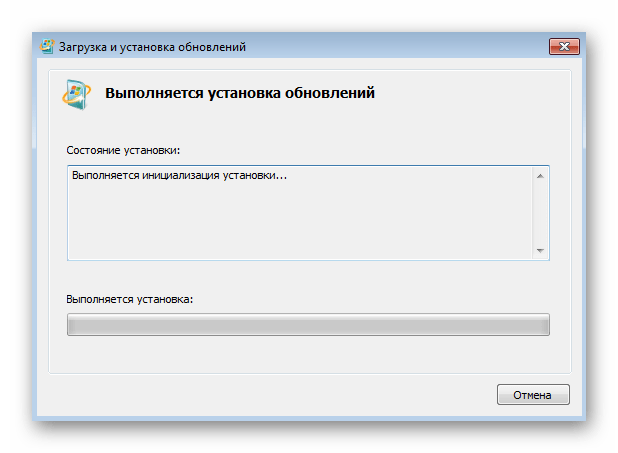
Как только операция пройдет успешно, отправьте компьютер на перезагрузку, подтвердив сообщение о необходимости сделать это. При старте следующего сеанса все апдейты уже будут активированы.
Удаление обновлений
Начиная с Windows 7, «Автономный установщик обновлений» может не только инсталлировать их, но и удалять. Деинсталляция тоже производится пользователем вручную через «Командную строку», что осуществляется так:
- Откройте «Пуск», отыщите там консоль, кликните по приложению правой кнопкой мыши и в контекстном меню выберите вариант «Запуск от имени администратора».
- Удаление апдейта с известным путем производится по команде
wusa.exe/uninstall, где в конце строки указывается полный путь. Нажатие по клавише Enter активирует выполнение команды. - Если знаете только код обновления, вставьте команду
wusa.exe/uninstall/kb:и после двоеточия без пробела укажите код этого пакета. - В случае ошибки в команде или при вводе
wusa.exe /helpпоявится отдельный список со всеми доступными функциями, запускаемыми пользователем вручную. Ознакомьтесь с ними и решите, какие из них могут пригодиться.
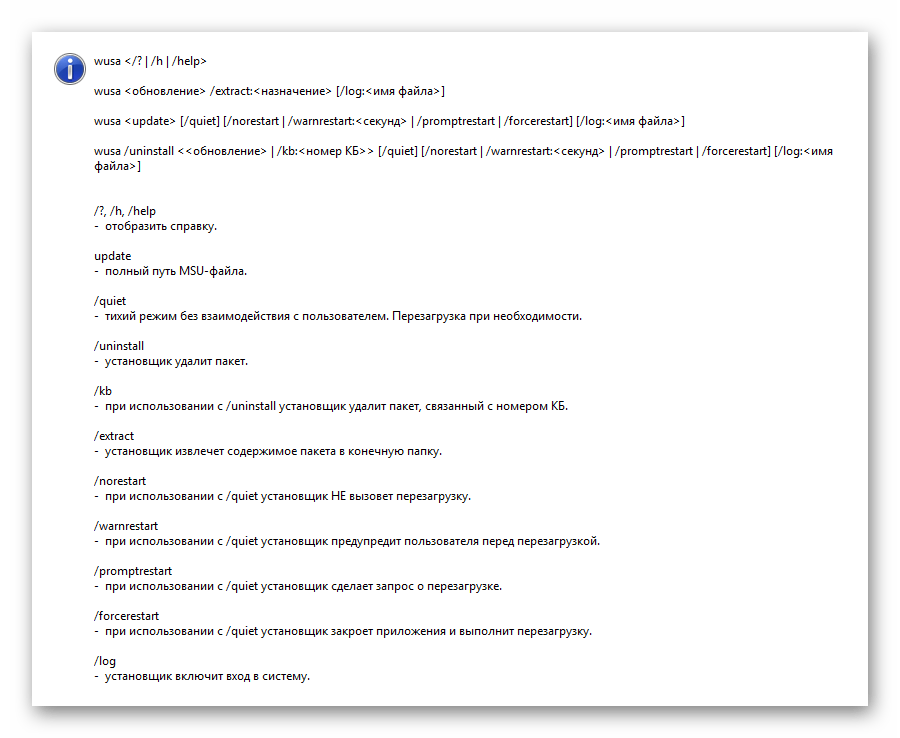
Отключение компонента
Рассматриваемый сегодня компонент тесно связан с «Центром обновления Windows» и зависит от его статуса. Соответственно, отключить его можно только полностью, избавившись от возможности получать апдейты автоматически. Если вас устраивает такой вариант и вы хотите отключить работу функций, чтобы другие пользователи не смогли запускать исполняемые файлы обновлений, выполните следующие действия:
- Откройте «Пуск» и перейдите в меню «Панель управления».
- В нем вас интересует раздел под названием «Администрирование».
- Среди списка инструментов отыщите элемент «Службы».
- В перечне служб найдите «Центр обновления Windows». Дважды кликните по пункту, чтобы открыть его свойства.
- Выберите тип запуска «Вручную», а затем остановите службу.
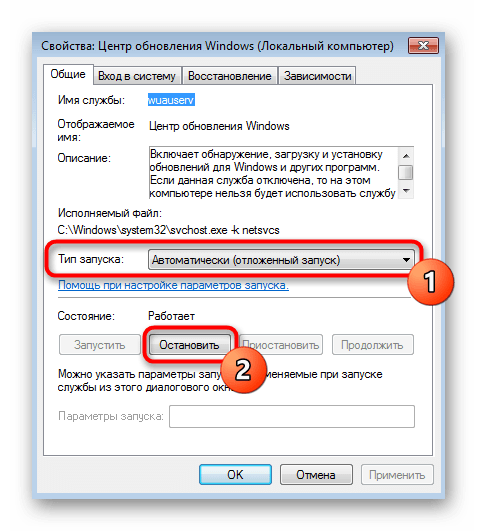
Теперь автоматическая проверка обновлений отключена и Автономный установщик тоже не найдет апдейтов при его запуске. Если вы захотите снова сделать службу активной, просто откройте это же меню и включите ее.
Решение возможных проблем
Самая распространенная проблема при использовании «Автономного установщика обновлений Windows» — ошибки в процессе инсталляции апдейтов. Они появляются из-за разных причин, например не подходит разрядность загруженных файлов или на компьютере уже есть этот пакет. Реже неполадки связаны с системными сбоями и ошибками при автоматическом поиске обновлений. Найти информацию по решению этой ситуации вы можете в отдельной статье на нашем сайте по следующей ссылке.
Подробнее: Решение проблем с установкой обновления Windows 7
Еще статьи по данной теме:
Помогла ли Вам статья?
Download PC Repair Tool to quickly find & fix Windows errors automatically
Windows Update Standalone installer is a small utility that is used to install standalone updates. Standalone updates are updates that are not automatically available at Windows Update in your Windows PC. These are special types of updates that are used or generated for a specific group of users; like the Windows6.1-KB977206-x86.msu update required to install Windows XP Mode on PC’s which do not support Hardware Virtualization.
The Windows Update Stand-alone installer viz. wusa.exe was introduced with some new features and improvements.
The Windows Update Stand-alone Installer (Wusa.exe) provides the following improvements in Windows 10/8/7:
- Uninstall support: Prior to Windows 7, wusa.exe included install support only. In Windows 10/8/7 wusa.exe includes uninstall support so that administrators can uninstall updates from a command line. Users can uninstall an update by providing the path to the .msu file or by providing the package number (from the Microsoft Knowledge Base) of the update to be uninstalled.
1. Use the following command to uninstall an update by specifying the full path to the update:
wusa.exe /uninstall <Path>
2. Use the following command to uninstall an update by specifying the update package number from the Microsoft Knowledge Base:
wusa.exe /uninstall /kb:<KB Number>
- Additional command-line parameters: New parameters are available in Windows 7 to enable logging, extract the contents of an .msu file, and control the restart behavior when an update is installed in quiet mode./log: This Switch is not available in earlier versions, Logging could only be enabled through tracing tools. This new parameter enables logging through the Wusa.exe tool./extract: Previously contents of .msu files could only be extracted by using the expand.exe tool. This new parameter enables .msu files to be extracted through the Wusa.exe tool./quiet: Supports the /norestart option only. Now The Switch functionality is extended to support the /forcerestart, /warnrestart, and /promptrestart options.
- Extended error information. The Wusa.exe tool provides extended information in error scenarios for better diagnosis. [1] Update is already installed:1 (S_FALSE)0x240006 (WU_S_ALREADY_INSTALLED) [2] Update is not applicable:1 (S_FALSE)0x80240017 (WU_E_NOT_APPLICABLE)
- Note: An update was released to provide the error codes for Windows 7 on computers that are running Windows Vista. For more information about the update, see KB949545.
Additional read at KB934307.
Related read: Windows Update Standalone Installer stuck on Searching for updates on this computer.
Nitin Agarwal is an MVP alumni and a Pro Blogger. He was awarded as Most Valuable Professional for 3 times by Microsoft in Windows Expert — Consumer category. He is immensely inspired by Bill Gates, Steve Jobs and APJ Abdul Kalam.
Download PC Repair Tool to quickly find & fix Windows errors automatically
Windows Update Standalone installer is a small utility that is used to install standalone updates. Standalone updates are updates that are not automatically available at Windows Update in your Windows PC. These are special types of updates that are used or generated for a specific group of users; like the Windows6.1-KB977206-x86.msu update required to install Windows XP Mode on PC’s which do not support Hardware Virtualization.
The Windows Update Stand-alone installer viz. wusa.exe was introduced with some new features and improvements.
The Windows Update Stand-alone Installer (Wusa.exe) provides the following improvements in Windows 10/8/7:
- Uninstall support: Prior to Windows 7, wusa.exe included install support only. In Windows 10/8/7 wusa.exe includes uninstall support so that administrators can uninstall updates from a command line. Users can uninstall an update by providing the path to the .msu file or by providing the package number (from the Microsoft Knowledge Base) of the update to be uninstalled.
1. Use the following command to uninstall an update by specifying the full path to the update:
wusa.exe /uninstall <Path>
2. Use the following command to uninstall an update by specifying the update package number from the Microsoft Knowledge Base:
wusa.exe /uninstall /kb:<KB Number>
- Additional command-line parameters: New parameters are available in Windows 7 to enable logging, extract the contents of an .msu file, and control the restart behavior when an update is installed in quiet mode./log: This Switch is not available in earlier versions, Logging could only be enabled through tracing tools. This new parameter enables logging through the Wusa.exe tool./extract: Previously contents of .msu files could only be extracted by using the expand.exe tool. This new parameter enables .msu files to be extracted through the Wusa.exe tool./quiet: Supports the /norestart option only. Now The Switch functionality is extended to support the /forcerestart, /warnrestart, and /promptrestart options.
- Extended error information. The Wusa.exe tool provides extended information in error scenarios for better diagnosis. [1] Update is already installed:1 (S_FALSE)0x240006 (WU_S_ALREADY_INSTALLED) [2] Update is not applicable:1 (S_FALSE)0x80240017 (WU_E_NOT_APPLICABLE)
- Note: An update was released to provide the error codes for Windows 7 on computers that are running Windows Vista. For more information about the update, see KB949545.
Additional read at KB934307.
Related read: Windows Update Standalone Installer stuck on Searching for updates on this computer.
Nitin Agarwal is an MVP alumni and a Pro Blogger. He was awarded as Most Valuable Professional for 3 times by Microsoft in Windows Expert — Consumer category. He is immensely inspired by Bill Gates, Steve Jobs and APJ Abdul Kalam.
| Информация о файле | Описание |
|---|---|
| Размер файла: | 297 kB |
| Дата и время изменения файла: | 2017:03:18 18:18:44+00:00 |
| Дата и время изменения индексного дескриптора файлов: | 2017:11:05 07:07:54+00:00 |
| Тип файла: | Win32 EXE |
| Тип MIME: | application/octet-stream |
| Предупреждение! | Possibly corrupt Version resource |
| Тип компьютера: | Intel 386 or later, and compatibles |
| Метка времени: | 2064:11:30 13:28:24+00:00 |
| Тип PE: | PE32 |
| Версия компоновщика: | 14.10 |
| Размер кода: | 191488 |
| Размер инициализированных данных: | 112640 |
| Размер неинициализированных данных: | 0 |
| Точка входа: | 0x2f410 |
| Версия ОС: | 10.0 |
| Версия образа: | 10.0 |
| Версия подсистемы: | 10.0 |
| Подсистема: | Windows GUI |
| Номер версии файла: | 10.0.15063.0 |
| Номер версии продукта: | 10.0.15063.0 |
| Маска флагов файлов: | 0x003f |
| Флаги файлов: | (none) |
| Файловая ОС: | Windows NT 32-bit |
| Тип объектного файла: | Executable application |
| Подтип файла: | 0 |
| Код языка: | English (U.S.) |
| Набор символов: | Unicode |
| Наименование компании: | Microsoft Corporation |
| Описание файла: | Windows Update Standalone Installer |
| Версия файла: | 10.0.15063.0 (WinBuild.160101.0800) |
| Внутреннее имя: | wusa.exe |
| Авторское право: | © Microsoft Corporation. All rights reserved. |
| Оригинальное имя файла: | wusa.exe |
| Название продукта: | Microsoft® Windows® Operating System |
| Версия продукта: | 10.0.15063.0 |
✻ Фрагменты данных файлов предоставлены участником Exiftool (Phil Harvey) и распространяются под лицензией Perl Artistic.
Microsoft выпускает новые обновления безопасности для своих продуктов как минимум один раз в месяц. В большинстве случаев служба Windows Update прекрасно справляется с автоматическим получением и установкой обновлений Windows. Также вы можете вручную найти, скачать и установить актуальное кумулятивное обновление безопасности для вашей редакции и версии Windows. Например, на компьютерах с отключенной службой wususerv, в изолированных от интернета сетях (если у вас не используется WSUS сервер, где можно вручную управлять тестированием и одобрением обновлений Windows), в локальной сети с лимитным подключением (metered connection) и т.д.
Содержание:
- Узнать дату установки последних обновлений Windows
- Как найти и скачать последние обновления безопасности для вашей версии Windows?
- Ручная установка кумулятивных обновлений в Windows
- Ручное обновление билда Windows 10 (Feature Update)
Каждый второй вторник месяца Microsoft выпускает новые обновления для всех поддерживаемых редакций Windows (исправления для особо критичных уязвимостей могут выпускаться быстрее, не дожидаясь этой даты. Также имейте в виду, что в Windows используется кумулятивная модель обновлений. Это означает, что для обновления Windows достаточно установить только один, последний, кумулятивный пакет безопасности.
Узнать дату установки последних обновлений Windows
Проверьте дату установки последних обновлений на вашем компьютере с помощью PowerShell команды:
gwmi win32_quickfixengineering |sort installedon -desc
Source Description HotFixID InstalledBy InstalledOn PCname1 Security Update KB5011352 NT AUTHORITYSYSTEM 2/9/2022 12:00:00 AMН
В данном случае видно, что последний раз на этом компьютере обновление безопасности устанавливалось 9 февраля 2022 года.
Так же вы можете вывести историю установки обновлений с помощью командлета
Get-WUHistory
из модуля PSWindowsUpdate:
Get-WUHistory|Where-Object {$_.Title -match "KB*"} |Sort-Object date -desc
Затем вам нужно узнать версию и номер билда вашей Windows. Воспользуйтесь командой:
Get-ComputerInfo | select WindowsProductName, WindowsVersion, OsHardwareAbstractionLayer, OsArchitecture
WindowsProductName WindowsVersion OsHardwareAbstractionLayer, OsArchitecture Windows 10 Pro 2009 10.0.19041.1566 64-bit
В моем случае мне нужно скачать последние обновления безопасности для Windows 10 20H2 x64.
Как найти и скачать последние обновления безопасности для вашей версии Windows?
Вы можете вручную скачать последние обновления для продуктов Microsoft из каталога обновлений Microsoft Update Catalog — https://www.catalog.update.microsoft.com/Home.aspx. В каталоге вы можете найти обновления для всех поддерживаемых версий Windows (также поддерживается прямой импорт обновлений через консоль WSUS). Главная проблема, что в каталоге отсутствует удобная система поиска. Если вы не знаете номер KB, который вам нужно установить, найти и скачать пакет с обновлением довольно трудно.
Рассмотрим, как сформировать правильный запрос для поиска обновлений для вашей редакции Windows в каталоге обновлений Microsoft. Статья пишется 9 марта 2022 года, соответственно последние обновления безопасности были выпушены вчера, 8 марта (второй вторник месяца). Для поиска обновлений безопасности для Windows 10 20H2 x64 за март 2022 года, воспользуйтесь таким поисковым запросом, который нужно вставить в поисковую строку в верхнем правом углу:
windows 10 20h2 x64 3/%/2022
Каталог Microsoft Update вернул список из 3 обновлений.
Как решить какие из этих обновлений нужно скачать и установить? Конечно, можно скачать и установить вручную все эти обновления, но можно сэкономить время. Т.к. Microsoft перешла на кумулятивные обновления, вам достаточно скачать и установить последнее Cumulative Update для вашей системы.
В моем случае доступно одно большое кумулятивное обновление для Windows 10:
- 2022-03 Cumulative Update for Windows 10 Version 20H2 for x64-based Systems (KB5011487), Windows 10 version 1903 and later, Security Updates, 3/7/2022 — 655.6 MB
Щелкните по названию обновления безопасности KB5011487. В открывшемся окне с информацией об обновлении перейдите на вкладку Package Details. На этой вкладке видно какие обновления заменяет данное обновление (This update replaces the following updates:), и каким обновлением заменяется в свою очередь оно (This update has been replaced by the following updates).
Как вы это обновление ничем не заменяется: This update has been replaced by the following updates: n/a. Значит это самое последнее и актуальное кумулятивное обновление безопасности для вашей версии Windows 10.
Нажмите на кнопку Download, в открывшемся окне появится прямая ссылка на загрузку MSU файла обновлений. Скачайте файл и сохраните его на диск.
Также вы можете найти номер KB актуального кумулятивного обновления для вашей версии Windows 10 с помощью страницы https://support.microsoft.com/en-us/topic/windows-10-update-history-7dd3071a-3906-fa2c-c342-f7f86728a6e3.
В списке слева выберите вашу версию Windows 10 (в моем примере это Windows 10 20H2), затем обратите внимание на список In this release. Самая первая запись ссылается на статью базы знаний для последнего кумулятивного обновления Windows этой редакции. В нашем примере это March 8, 2022—KB5011487 (OS Builds 19042.1586, 19043.1586, and 19044.1586). Именно это обновление мы и скачали согласно методике выше.
Затем скачайте последнее доступное обновление служебного стека Windows 10 (SSU — Servicing Stack Updates). Это обновление также можно найти в Windows Update Catalog по ключевой фразе:
servicing stack windows 10 20h2
Обязательно установите Servicing Stack Update до установки накопительного обнолвения безопасности Windows.
C марта 2021 года, Microsoft перестала выпускать отдельные обновления SSU для билдов Windows 10 2004 и старше. Теперь они интегрируются в последнее кумулятивное обновление LCU (Latest Cumulative Update).
Скачать файлы обновлений Windows с помощью PowerShell
Для скачивания файлов MSU обновлений из Microsoft Update Catalog можно использовать командлет Save-KBFile из модуля KBUpdate (KB Viewer, Saver, Installer and Uninstaller) — https://github.com/potatoqualitee/kbupdate
Установите модуль из PowerShell Gallery:
Install-Module kbupdate -Scope CurrentUser
Для загрузки определенных файлов обновлений выполните команду PowerShell:
Save-KBFile -Name KB5011487, 5005260 -Architecture x64 -Path C:Updates
Ручная установка кумулятивных обновлений в Windows
После того, как вы скачали MSU файл с актуальным кумулятивным обновлением для вашей редакции Windows 10, вы можете его установить.
Щелкните дважды по скачанному msu файлу и следуйте шагам мастера автономного установщика обновлений Windwows.
После окончания установки пакета обновлений нужно перезагрузить компьютер (если после установки обновления вы наблюдаете проблемы с работой ОС или приложений, вы можете удалить его).
Также вы можете установить обновление Windows из командной строки в тихом режиме с помощью утилиты wusa.exe (Windows Update Standalone Installer). Следующая команда установит указанное обновление в тихом режиме и отложит автоматическую перезагрузку системы после завершения установки:
wusa C:updateswindows10.0-kb5011487-x64_2190163dcb84974d93ecdc32bdae277b57ebb95c.msu /quiet /norestart
Ручное обновление сигнатур Windows Defender
Если на вашем устройстве Windows включен встроенный Windows Defender Antivirus, вы можете вручную обновить его сигнатуры. Обновление с новым набором сигнатур можно скачать с Microsoft Update Catalog, либо (проще) со страницы https://www.microsoft.com/en-us/wdsi/defenderupdates#manual.
Скачайте файл офлайн установки для вашей версии Window. Например, Microsoft Defender Antivirus for Windows 10 and Windows 8.1 64-bit.
Запустите и установите файл
fpam-fe.exe
для обновления антивирусных баз.
Ручное обновление билда Windows 10 (Feature Update)
Также вы можете вручную обновить билд Windows 10 (Feature Update). Например, вы хотите вручную обновить билд Windows 10 на своем компьютере с 20H2 (окончание поддержки 10 мая 2022) на 21H2.
Для этого перейдите на страницу https://www.microsoft.com/en-us/software-download/windows10 и нажмите кнопку Update Now.
Скачайте и запустите файл Windows 10 Update Assistant (
Windows10Upgrade9252.exe)
.
Мастер предложит вам обновится до последней версии Windows 10 (Windows 10 November 2021 Update). Для такого обновления требуется подключение к интернету.
Чтобы выполнить оффлайн обновление билда Windows 10, сформируйте установочный ISO образ с новый билдом Windows 10 с помощью Media Citation Tool (позволяет создать iso образ или загрузочную флешку с Windows 10).
Затем смонтируйте ISO образ в виртуальный привод и запустите файл setup.exe. Следуйте шагам мастера обновления Windows. Подробнее это описано в статье про обновление билда Windows 10 из командной строки.
Installer » Windows Update Standalone Installer
Windows Update Standalone Installer
Parameter
| /help | View help. |
| /? | ::: |
| /h | ::: |
| /quiet | Run Wusa.exe in quiet mode without user interaction. When the tool runs in quiet mode, it runs without user interaction. The computer restarts if this is required.
For example, if the Windows6.0-KB934307-x86.msu file is in the D:934307 folder, type the following command at a command prompt to install the update package without user interaction: wusa.exe d:934307Windows6.0-KB934307-x86.msu /quiet Note When you use this switch, the Microsoft Software License Terms do not appear. |
| /norestart | Prevents Wusa.exe from restarting the computer. The /norestart switch is ignored if the /quiet switch is not present. If you run Wusa.exe together with these two switches, you must manually restart the operating system after the installation is complete if the installation requires you to restart the computer.
For example, if the Windows6.0-KB934307-x86.msu file is in the D:934307 folder, type the following command at a command prompt to install the update package: wusa.exe D:934307Windows6.0-KB934307-x86.msu /quiet /norestart |
| /uninstall | Uninstalls the specified package or KB number. |
| /kb | Specifies the package to be uninstalled by using its KB number. Can be passed only together with the /uninstall switch. |
| /extract | Wusa.exe extracts the package contents to a destination folder. |
| /warnrestart | When this switch is combined with the /quiet switch, Wusa.exe prompts you before it begins a restart for install and uninstall operations. |
| /forcerestart | When this switch is combined with the /quiet switch, Wusa.exe forcibly closes applications and then begins a restart. |
Exit Codes
| Code | Desc |
| 0 | FIXME |
| 3010 | FIXME |
| 2359302 | The update to be installed is already installed on the system |
https://support.microsoft.com/en-us/help/938205/windows-update-error-code-list
В прошлом году было выпущено исправление Microsoft KB2953212 , которое позволило пользователям отключить Name
Resolution Policy Table (NRPT) на клиенте DirectAccess. Это исправление работало в конкретном сценарии , где клиент DirectAccess находясь в внутри корпоративной сети, не мог подключиться к локальным ресурсам из-за недоступности сервера местоположения
(NLS).
При установке этого обновления многие сталкиваются с таким сообщением об ошибке:
Windows Update Standalone Installer The update is not applicable to your computer
Решение
Это происходит потому, что обновление KB2953212 было включено в накопительный пакет обновлении KB3000850 за
ноябрь месяц 2014 года для Windows 8.1 и Windows Server 2012 R2. Вы можете проверить это, открыв Панель
управления, выбрав Программы и компоненты, а затем нажав Просмотр установленных обновлений.
Если у вас есть накопительный пакет обновления KB3000850 за ноябрь 2014 года в списке установленных обновлений, вам не нужно выполнять дополнительных действий, так как данное
накопительное обновление включает в себя KB2953212.
Оригинал статьи: blog.eaglenn.ru

 , type event viewer in the Start Search box, and then click Event Viewer in the Programs list. In Windows 8 and Windows Server 2012, on the Start screen, type event viewer, click Settings, and then click View event logs under Settings.
, type event viewer in the Start Search box, and then click Event Viewer in the Programs list. In Windows 8 and Windows Server 2012, on the Start screen, type event viewer, click Settings, and then click View event logs under Settings. If you are prompted for an administrator password or for confirmation, type the password, or click Continue.
If you are prompted for an administrator password or for confirmation, type the password, or click Continue.